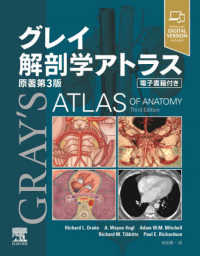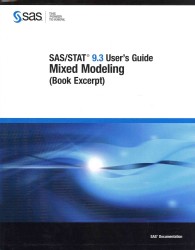- ホーム
- > 洋書
- > 英文書
- > Science / Mathematics
Full Description
It is generally recognized that the knowledge and research base that underpins dentistry lies in the biological and physical sciences. In this context, the major advances in these sciences over the past two decades have come through the application of molecular bi- ogy and nanotechnology. These advances are currently impacting on the diagnosis and treatment of a wide range of human diseases and it is essential that dental research, education, and practice keep pace with this rapidly advancing ?eld. As pointed out by Ford et al. (1): The de?nition of disease is also changing. Previously, disease was understood to be the presence of symptoms or of a particular phenotype. With increasing knowledge of the genetic basis of many diseases, this de?nition is changing to become the presence of a genotype conferring a pre-disposition to clinical symptoms or phenotype (Ford et al. (1)). This changing de?nition of disease means that today's undergraduate or graduate student in dentistry (and its related ?elds) must be in a position not only to acquire new knowledge in the future but also to be able to evaluate the information and apply it in a clinically relevant setting. This naturally positions oral biology as an integral part of any dentally related professional's repertoire of knowledge. There are as many topics in oral biology as there are the number of sites and micro- vironments within the oral cavity.
Contents
Saliva Studies.- Gene Therapy of Salivary Diseases.- Collection, Storage, and Processing of Saliva Samples for Downstream Molecular Applications.- Proteomic Analysis of Saliva: 2D Gel Electrophoresis, LC-MS/MS, and Western Blotting.- Transcriptomic Analyses of Saliva.- Oral Microbiology.- The Oral Microbiota: General Overview, Taxonomy, and Nucleic Acid Techniques.- Microbial Community Profiling Using Terminal Restriction Fragment Length Polymorphism (T-RFLP) and Denaturing Gradient Gel Electrophoresis (DGGE).- Protocols to Study the Physiology of Oral Biofilms.- Adhesion of Yeast and Bacteria to Oral Surfaces.- Quantitative Analysis of Periodontal Pathogens by ELISA and Real-Time Polymerase Chain Reaction.- Bacterial Viability Determination in a Dentinal Tubule Infection Model by Confocal Laser Scanning Microscopy.- Characterization of Anti-competitor Activities Produced by Oral Bacteria.- Natural Transformation of Oral Streptococci.- Use of In Vivo-Induced Antigen Technology (IVIAT) to Identify Virulence Factors of Porphyromonas gingivalis.- Oral Bacterial Genome Sequencing Using the High-Throughput Roche Genome Sequencer FLX System.- Use of a Yeast-Based Membrane Protein Expression Technology to Overexpress Drug Resistance Efflux Pumps.- Cells and Tissues.- Explant Culture of Embryonic Craniofacial Tissues: Analyzing Effects of Signaling Molecules on Gene Expression.- A Method to Isolate, Purify, and Characterize Human Periodontal Ligament Stem Cells.- Preclinical Methods for the Evaluation of Periodontal Regeneration In Vivo.- Proteomic Analysis of Dental Tissue Microsamples.- Immunological Techniques: ELISA, Flow Cytometry, and Immunohistochemistry.- Analysis of Immune Responses to Purified Recombinant Antigens of Periodontal Pathogens.- Single-Strand ConformationPolymorphism Analysis for the Diagnosis of T-Cell Clonality in Periodontal Disease.- Real-Time PCR Focused-Gene Array Profiling of Gingival and Periodontal Ligament Fibroblasts.- The Use of Gene Arrays in Deciphering the Pathobiology of Periodontal Diseases.- Bioinformatics Techniques in Microarray Research: Applied Microarray Data Analysis Using R and SAS Software.








